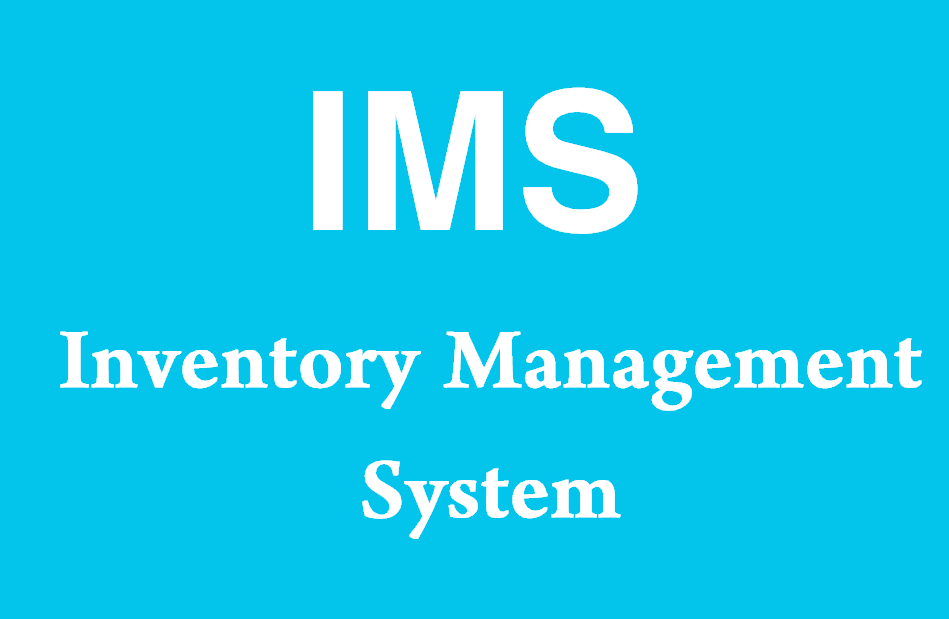China has become the world’s manufacturing powerhouse, and its supply chains are among the most complex and diverse in the world. Businesses seeking to optimize their supply chain operations must embrace technology to manage the scale, efficiency, and transparency required for successful operations. From inventory management and demand forecasting to logistics optimization and real-time tracking, leveraging technology is essential for businesses sourcing from China to maintain competitive advantages, reduce costs, and improve overall supply chain performance.
The Importance of Technology in Supply Chain Management
The integration of technology into supply chain management (SCM) is no longer a luxury but a necessity. Modern supply chains are increasingly reliant on digital tools to improve efficiency, reduce costs, and respond to market changes quickly. The scope of technology in SCM covers a wide range of areas, including inventory management, production planning, supplier relationship management, and logistics.
Benefits of Leveraging Technology in SCM
- Improved Efficiency: Automation, real-time tracking, and data analytics help streamline processes and minimize human error, which enhances productivity.
- Cost Reduction: Technology enables better resource allocation, reduces waste, and helps companies avoid costly mistakes.
- Enhanced Decision-Making: With access to real-time data and analytics, businesses can make informed decisions based on accurate and timely information.
- Supply Chain Transparency: Technologies like blockchain and RFID improve visibility across the supply chain, making it easier to trace products from source to delivery.
Key Technologies in Supply Chain Management
There are various technologies that businesses can leverage to enhance different aspects of their supply chain operations. Some of these technologies are particularly beneficial for businesses operating in or sourcing from China, where fast-paced, large-scale manufacturing demands efficient supply chain solutions.
Enterprise Resource Planning (ERP) Systems
Enterprise Resource Planning (ERP) systems are comprehensive software solutions that integrate various business functions, including procurement, production, inventory management, sales, and finance. These systems allow businesses to manage supply chain operations from a central platform, facilitating better decision-making and coordination between departments.
Key Features of ERP Systems
- Real-Time Data Integration: ERP systems provide real-time data that enables businesses to monitor stock levels, track order statuses, and adjust production schedules on the fly.
- Centralized Information: By centralizing information, ERP systems help reduce errors caused by data duplication and provide stakeholders across the business with a single source of truth.
- Supplier Relationship Management: ERP systems allow businesses to track supplier performance, manage contracts, and communicate effectively, ensuring that sourcing from Chinese suppliers remains efficient.
Popular ERP Systems in China
- SAP: One of the most widely used ERP systems globally, SAP offers robust functionalities that integrate financial, operational, and supply chain management processes.
- Oracle: Known for its scalable and customizable ERP solutions, Oracle offers tools to manage procurement, inventory, and supply chain operations, particularly in large enterprises.
- Kingdee: A Chinese ERP solution that has become popular among local businesses due to its adaptability to Chinese market needs and regulations.
Internet of Things (IoT) for Real-Time Tracking
The Internet of Things (IoT) refers to the network of physical devices that are connected to the internet and can communicate with each other. In the context of supply chain management, IoT technology can be used to track products, monitor equipment, and gather real-time data about the supply chain.
Applications of IoT in Supply Chain Management
- Inventory Management: IoT-enabled sensors can be placed on products, pallets, or storage bins to track stock levels in real time. This improves inventory accuracy and reduces the chances of overstocking or stockouts.
- Fleet Management: IoT can be used to track the location and condition of delivery trucks and shipping containers. Businesses can monitor shipments in transit, assess delivery times, and predict potential delays.
- Warehouse Automation: Smart sensors, RFID tags, and automated systems help manage warehouse operations, including sorting, storing, and retrieving products efficiently.
Impact of IoT on Chinese Supply Chains
China’s vast manufacturing base and logistical infrastructure can benefit greatly from IoT. In warehouses, IoT devices can track products as they move through the supply chain, allowing businesses to optimize storage and handling. In logistics, IoT applications provide end-to-end visibility, which is crucial when managing large volumes of goods moving across long distances.
Artificial Intelligence (AI) and Machine Learning for Demand Forecasting
Artificial Intelligence (AI) and Machine Learning (ML) are transforming supply chain management by enabling businesses to forecast demand, optimize routes, and streamline operations. AI-driven analytics and predictive modeling can improve forecasting accuracy and help businesses better prepare for market changes.
Applications of AI and ML in SCM
- Demand Forecasting: AI-powered algorithms analyze historical data, market trends, and external factors (e.g., weather, holidays) to predict demand patterns with high accuracy. This helps businesses plan production schedules and manage inventory more effectively.
- Predictive Maintenance: AI can be used to predict when machinery or equipment is likely to fail, allowing businesses to perform maintenance proactively and avoid costly downtime.
- Route Optimization: AI and ML can optimize shipping routes by analyzing traffic, weather, and other variables. This helps businesses reduce transportation costs, improve delivery times, and minimize fuel consumption.
Impact on Sourcing from China
Demand forecasting is particularly important when sourcing from China, as supply chains are often subject to fluctuations in production capacity and international shipping constraints. By leveraging AI, businesses can anticipate potential delays or bottlenecks, adjust orders accordingly, and ensure that production meets demand levels.
Blockchain Technology for Supply Chain Transparency
Blockchain technology, which is widely known for its use in cryptocurrencies, is increasingly being applied in supply chain management to improve transparency, traceability, and security. Blockchain is essentially a distributed ledger that records transactions in a secure and immutable way.
Applications of Blockchain in SCM
- Supply Chain Visibility: Blockchain can provide a transparent view of the entire supply chain, allowing businesses to track products from the manufacturer to the end consumer. This level of visibility helps reduce fraud, counterfeiting, and errors.
- Smart Contracts: Blockchain-based smart contracts automatically execute agreements when pre-set conditions are met, eliminating the need for intermediaries. This can speed up payment processes, improve accuracy, and reduce the risk of disputes.
- Product Provenance: For industries like luxury goods or food, blockchain can be used to trace the origin of products, ensuring that they are sourced ethically and comply with regulatory requirements.
Blockchain Adoption in Chinese Supply Chains
Chinese companies are increasingly adopting blockchain technology to enhance their supply chains. The use of blockchain in the food industry, for example, ensures the traceability of products from farm to table, while in the manufacturing sector, blockchain can authenticate the origin of goods, reducing counterfeit risks. China’s push for digitization in industries like manufacturing and logistics further supports blockchain’s integration into supply chains.
Logistics Optimization and Transportation Management Systems (TMS)
Logistics play a critical role in the supply chain, especially when sourcing products from China. Optimizing logistics operations and transportation management is key to reducing costs and improving efficiency. Transportation Management Systems (TMS) are one of the most valuable tools for logistics optimization.
Key Features of Transportation Management Systems
- Route Planning and Optimization: TMS software helps businesses plan the most efficient routes for deliveries, considering factors like traffic patterns, weather conditions, and fuel costs. This reduces transportation costs and improves delivery timelines.
- Carrier Management: TMS can be used to manage relationships with freight carriers and optimize shipping costs by selecting the best carrier based on cost, reliability, and performance.
- Real-Time Tracking: TMS enables businesses to track shipments in real time, improving visibility and allowing for more accurate delivery estimates. This is crucial when managing large volumes of goods and coordinating international shipments from China.
The Role of TMS in Chinese Supply Chains
Given China’s vast size and the complexity of its transportation infrastructure, TMS software helps businesses efficiently manage shipments both within China and across international borders. Real-time tracking, route optimization, and freight consolidation are particularly beneficial when sourcing products from different regions in China and ensuring timely deliveries.
Cloud-Based Platforms for Collaboration
Cloud-based supply chain platforms offer businesses the ability to collaborate seamlessly with suppliers, distributors, and logistics providers in real time. These platforms enable businesses to store, share, and analyze data across the supply chain, leading to more efficient operations and better decision-making.
Key Features of Cloud-Based Platforms
- Centralized Data Access: Cloud-based platforms centralize supply chain data, making it accessible to stakeholders at all levels. This ensures that everyone in the supply chain has access to up-to-date information, improving coordination and decision-making.
- Collaboration Tools: These platforms offer built-in collaboration tools that allow teams to communicate, share documents, and resolve issues quickly, improving the overall speed and efficiency of the supply chain.
- Scalability: Cloud-based platforms allow businesses to scale their supply chain management operations as needed, which is particularly beneficial when expanding sourcing operations or managing fluctuating demand.
Cloud Solutions in China
In China, many businesses are increasingly adopting cloud-based platforms for SCM to leverage the advantages of real-time collaboration and data accessibility. Local cloud providers like Alibaba Cloud and Tencent Cloud offer customized solutions for Chinese businesses, allowing for integration with local regulatory frameworks and supply chain needs. These platforms are particularly useful for managing relationships with suppliers, handling large volumes of data, and optimizing logistics operations.
Advanced Data Analytics for Supply Chain Optimization
Big data analytics has revolutionized supply chain management by providing businesses with powerful insights into their operations. By analyzing large volumes of data from various sources—such as production rates, customer demand, and market trends—businesses can optimize their supply chains and improve forecasting accuracy.
Applications of Big Data in SCM
- Demand Forecasting: Analyzing historical sales data, market conditions, and seasonal trends enables businesses to predict demand more accurately. This helps optimize inventory levels and production schedules, reducing costs related to overstocking or stockouts.
- Supplier Performance Analysis: Big data tools can track supplier performance metrics such as delivery times, product quality, and pricing, allowing businesses to make data-driven decisions when selecting suppliers or negotiating contracts.
- Predictive Analytics: Predictive models can be used to anticipate future disruptions in the supply chain, such as shortages or delays, and allow businesses to take proactive measures to mitigate risks.
Leveraging Big Data in Chinese Supply Chains
Chinese manufacturing and logistics industries generate vast amounts of data, and leveraging big data analytics can enhance decision-making and improve supply chain efficiency. With access to real-time production data, businesses can adjust their sourcing and production plans to avoid bottlenecks, optimize costs, and maintain a smooth flow of goods from China.





